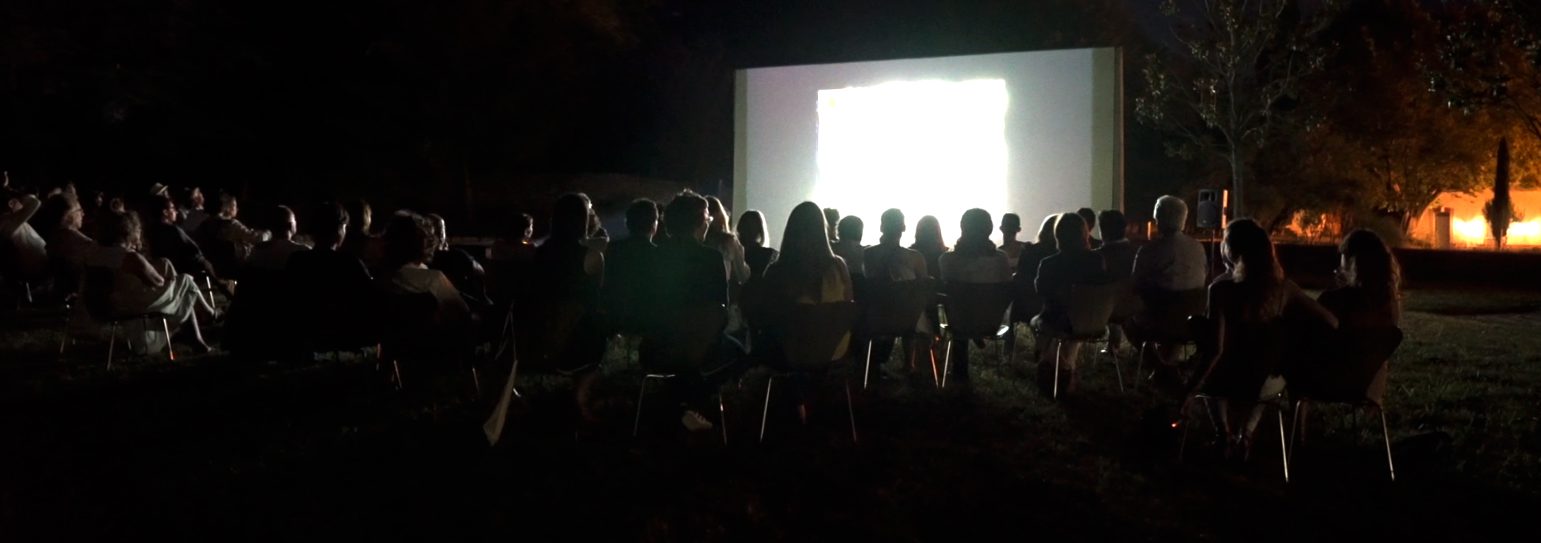From the first group exhibition of Chinese avant-garde art in the West, at the foot of Montagne Sainte-Victoire in 1990, to the group account of the memory of it in 2016. How do you get people to share a moment that you yourself did not experience?
It was in this context from 7 to 31 July 1990 that Michèle Cohen organised the China Tomorrow for Yesterday exhibition, featuring six artists who had left China not long before, in Pourrières, which lies at the foot of Montagne Sainte-Victoire and is near Aix-en-Provence.
When he set off, he didn’t know where he was going; when he arrived, he didn’t know where he was; but he didn’t care either way!
The painter Yang Jiechang had just come from a founding event, the Magicians of the Earth exhibition of ‘non-Western’ contemporary art mounted in 1989 by the Centre Pompidou in Paris.
Huang Yong Ping, another ‘magician of the Earth’, did not envisage that his huge sculptural installations would one day represent France at the Venice Biennale.
The painter and sculptor Yan Pei-Ming was then just beginning his series of vast, almost monochrome portraits. The former Red Guard Gu Wenda was already using hair in his paintings. The plastic artist Cai Guo-Qiang did not know that he would be the first Chinese artist to have a retrospective at the Guggenheim in New York in 2008 and he had absolutely no idea that he, together with the composer Qigang Chen, would direct the Opening Ceremony of the Beijing Olympic Games.
And lastly there was Chen Zhen, a plastic artist who died very young and whose work reveals the influence of Tibet and Chinese medicine. Chen was undoubtedly one of the most creative, original and significant members of the post-Mao generation of Chinese contemporary artists.
All these artists had already embarked on their approaches and works, which they went on to develop and made a name for themselves. Similarly, Fei Dawei, the curator of China Tomorrow for Yesterday, and the art critics involved in the exhibition later played a key role in the West’s discovery of Chinese contemporary art.
Impalpable traces
Begun at the initiative of a passionate young woman, “China Tomorrow for Yesterday” left very few traces even though it was a key moment that dramatically altered people’s lives.
These words were spoken by Yves Michaud, then director of the École Nationale Supérieure des Beaux-Arts in Paris, who gave valuable support to the exhibition. He explains that “the memory was later lost, or rather, it faded. Few people remembered the event and they all had their activities and their personal history. All the works disappeared, as was expected, moreover.”
So it was a rumour and ephemeral works that Sacha Guedj Cohen set off in pursuit of 26 years later.
 Sacha Guedj Cohen searching for the archives of a forgotten exhibition…
Sacha Guedj Cohen searching for the archives of a forgotten exhibition…A human and joyful success
Sacha’s tenacity revived the memory of a moment described by Yves Michaud as “a human and joyful success in the way the artists got involved, worked in situ and created a powerful event”; her wish to launch a dialogue on the way this collective history was written, erased and rewritten finally bore fruit.

On 9 and 10 July 2016, Sacha and a handful of fellow believers went back over the traces left by China Tomorrow for Yesterday. Supported by Almayuda, but also by Château La Coste, Pourrières Municipal Council and France Culture, she was at last able to share and convey that important moment that she herself was not there to experience.
The organisation was beset with difficulties, but during this struggle she came across a ‘travelling companion’. Cheng Ran is a young artist who lives and works in Hangzhou. He was the one who got to the heart of the few archives left by the exhibition in 1990 and used the material in them to make a four-minute film he entitled For Today, Not Tomorrow. He did a voice-over in French, a language he had not mastered, using lines from a poem written for the occasion. A powerful moment that expresses the emotional connection between the past and the present, China and Montagne Sainte-Victoire…
The screening of this film was one of the highlights of the event on 9 and 10 July 2016; other such moments included the talks and the walk around the various places where the artists created their works in 1990.

When the walkers came to the end of their stroll in the centre of Pourrières, they unveiled a marble stone engraved with the words of an unknown author: “When he set off, he didn’t know where he was going; when he arrived, he didn’t know where he was; but he didn’t care either way!”
Chen Zhen would undoubtedly have said of these words: “That’s Chinese, that”, which for him was a tremendous compliment. “It shows that the Chinese do not tackle problems head on and that they begin by stating nothing. We express ourselves in allusions, evocations, by metaphors, by employing a pretext, a paradox, turning ideas around, a euphemism.”
(1) Michèle Cohen, Jean-Marc Decrop, Lorenzo Fiaschi, Jean De Gaspary, Abdellah Karroum, Bernard Marcadé, Yves Michaud, Emmanuel Perrotin, Cheng Ran.
Photo credit
Photos: Siël Guedj Cohen and Archives La Non-Maison
Useful links : http://chateau-la-coste.com/






